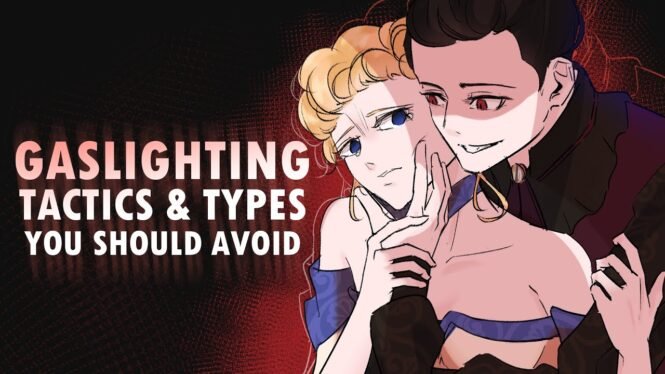If you’ve ever experienced gaslighting, you know how manipulative and damaging it can be. Gaslighting is a tactic used by individuals to make others question their own sanity and perception of reality. It’s a form of emotional abuse that can occur in various relationships, but it’s often seen in romantic partnerships, family dynamics, and workplace hierarchies. In this blog post, we will explore the most common gaslighting tactics and types that you should avoid to maintain your mental health and well-being. Let’s dive in.
Gaslighting Tactics and Types You Should Avoid
Introduction
Gaslighting is a form of mental manipulation that occurs in various types of relationships, not only in romantic ones. The ultimate goal of gaslighting is to manipulate and control the victim. It causes the victim to doubt their memory and perception, leading to confusion and self-doubt. Gaslighting is often difficult to recognize and can take different forms, including lying, manipulating facts or provoking the victim. This article will provide insights into gaslighting tactics and types to look out for.
Types of Gaslighting Tactics
1. Countering
Countering is one of the most common gaslighting tactics where the abuser denies the victim’s reality and challenges their memory. They may say things like, “That never happened,” “You’re overreacting,” or “You’re making things up.” By doing so, the abuser tries to make the victim feel that they cannot trust their memory and perception.
2. Withholding Information
Withholding information is a tactic where the abuser hides information from the victim or pretends to forget critical details. This way, they can control the narrative and make the victim perceive the situations in the abuser’s favor.
3. Trivializing
Trivializing is a tactic where the abuser belittles the victim’s emotions and concerns. They may say things like, “You’re just being dramatic,” “Why are you making a big deal out of it?” or “It’s not a big deal.” This way, they invalidate the victim’s feelings and make them feel unimportant.
4. Sabotaging
Sabotaging is a tactic where the abuser purposely creates obstacles for the victim, causing them to fail or doubt themselves. This could be by withholding critical information or resources or setting unrealistic expectations.
5. Gaslighting through Accusation
Gaslighting through accusation is a tactic where the abuser accuses the victim of doing things that they have not done. They may say things like, “You’re cheating on me,” “You’re lying to me,” or “You’re hiding something.” By doing so, they distract the victim from their gaslighting tactics and make them feel defensive.
Examples of Gaslighting Tactics
The following are examples of gaslighting tactics utilized by abusers:
- Downplaying or denying the victim’s concerns, experiences, or feelings.
- Using the silent treatment to manipulate the victim.
- Twisting words and phrases to send mixed messages.
- Making up stories or twisting facts to suit their narrative.
- Blaming the victim for anything and everything.
- Doubting the victim’s mental health, including diagnosing them with mental illnesses they don’t have.
How to Avoid Gaslighting Tactics
To avoid gaslighting tactics, there are several things you should do, including:
- Trust your instincts and intuition.
- Keep a record of conversations or incidents if you feel that you’re constantly questioning your memory.
- Question statements that challenge your reality but don’t engage in arguments.
- Seek support from friends, family, or a professional.
Conclusion
Gaslighting tactics are forms of mental manipulation that cause the victim to doubt their memory and perception. It can occur in various types of relationships, and the ultimate goal of gaslighting is to manipulate and control the victim. Gaslighting causes the victim to feel a lack of control, confusion, and self-doubt. However, by recognizing gaslighting tactics and seeking support, it’s possible to avoid them and break free from the cycle of abuse.
FAQs
Q: Is gaslighting always intentional?
A: Yes, gaslighting is always an intentional tactic used to manipulate and control someone.
Q: Can gaslighting happen in friendships?
A: Yes, gaslighting can happen in friendships, family relationships, and professional relationships.
Q: How can you heal after experiencing gaslighting?
A: Healing after gaslighting involves seeking support, acknowledging what happened, and practicing self-care.
Q: Can gaslighting cause long-term damage?
A: Yes, gaslighting can cause long-term emotional and psychological trauma.
Q: Can gaslighting happen to anyone?
A: Yes, gaslighting can happen to anyone, regardless of age, gender, or ethnicity.
Christopher Conway, the innovative mind behind “Love Blueprints,” is a seasoned relationship expert and author. His insightful guidance, drawn from years of experience and study, offers transformative strategies for modern love and dating. Christopher’s commitment to enhancing romantic connections has made “Love Blueprints” a go-to resource for those navigating the complexities of relationships.




